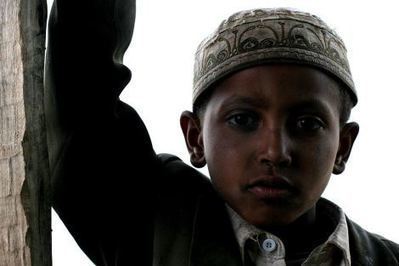"I am torn about how to teach these two ideas about cultures and societies all around the world:
People and cultures are different all over the world.People and cultures are the same all over the world.These points may seem like a contradiction, but when put into proper context they teach important truths about culture."



 Your new post is loading...
Your new post is loading...









Unit 3:
Shines insight on stereotypes that are commonly used throughout the world. Reading this article really made me think about stereotypes that are so commonly used they are considered acceptable. It's a ridiculous idea to think that all people under a culture act and behave the same way.
UNIT 3 CULTURE
This article is written to compare and contrast various ways to teach young school children about global cultures. On one hand, we can relate all cultures to each other, due to their common goals and views. For example, all families around the world aim to do what's best for each other, love and cherish one another, and try their hardest to succeed economically. On the other hand, cultures are extremely different around the world, with different music, clothing, and underlying views on life. We can continue to say that popular culture has diffused so greatly, with advanced technologies and means of transportation, so it has influenced and homogenized our landscape quite a bit. Folk culture is obviously still a powerful force, but popular culture does have some effects around the world. I believe that children need to understand the importance of maintaining diversity thy preserving folk culture but they also need to acknowledge the pros and cons of the global diffusion of popular culture and how it connects us at a global scale.
I think Teaching Cultural Empathy: Stereotypes, World Views and Cultural Difference is a helpful article for teachers to read. This article considers ideas I constantly come back to, whilst collecting resources and ideas for teaching students about cultural diversity and identity. How do I teach students, that ‘people and cultures are different all over the world’ (Dixon, 2015, April 2), but also the same?
Dixon suggests that we need to teach that people and cultures worldwide are the SAME and DIFFERENT simultaneously. In this way, students can appreciate the rich diversity of cultures and societies, whilst at the same time learning values of humanity and empathy, which unite us all.
I believe by recognising and appreciating the rich cultures of students in the classroom, we can explore and learn about cultural diversity in an honest, rich and non-stereotypical way and allow students to feel valued at the same time. In addition, as students know each other, this helps them relate to ‘people from other places, who speak other languages’ and follow different religions to their own (Dixon, 2015, April 2). Furthermore, this should help increase intercultural understanding in the classroom by developing a ‘socially cohesive’ environment that ‘respects, and appreciates cultural, social and religious diversity’ (MYCEETA, p. 7).
References
Dixon, S. (2015, April 2). Teaching cultural empathy: Stereotypes, world views and cultural difference. National Geographic. Retrieved April 7, 2015, http: http://blog.education.nationalgeographic.com/2015/02/04/teaching-cultural-empathy-stereotypes-world-views-and-cultural-difference/
Ministerial Council on Education, Employment, Training, and Youth Affairs. (2008, December). Melbourne declaration on educational goals for young Australians. Melbourne: Author.